Food poisoning usually includes stomach pains, nausea, vomiting, and even fever. With over 4 million Canadians getting food poisoned every year, home cooks can practice some basic food safety rules to protect their family. Most vulnerable to food poisoning are young children, the elderly and anyone with a compromised immune system.
Clean:
- Make sure your hands and the counters are clean before and after touching food.
- Wash hands for at least 20 seconds with soap and water, sing a chorus of Happy Birthday to yourself or pretend you are in an episode of Grey’s Anatomy just before a surgical procedure.
- Designate a cutting board for fruits and vegetables and a separate one for meat, fish, and poultry.
- Wash cutting boards with hot soapy water.
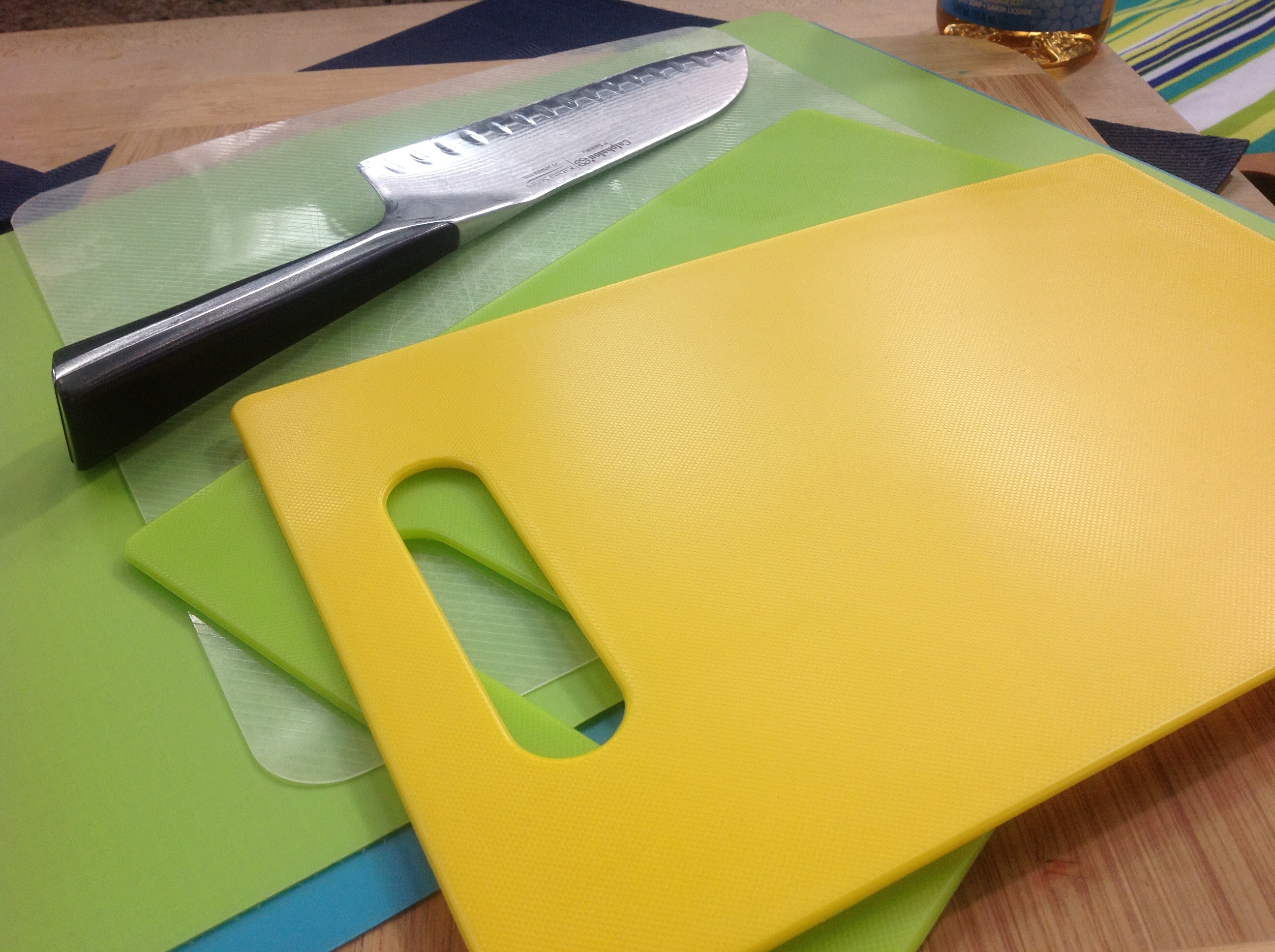
- Never transfer cooked meat, fish or poultry onto a plate that was used for raw meat, fish or poultry.
- Avoid kitchen sponges, they are a breeding ground for bacteria, even if you toss them in the dishwasher.
- Wipe counters with paper towels OR change your dishcloth daily, wash the dishcloth in hot soapy water and air dry.
-
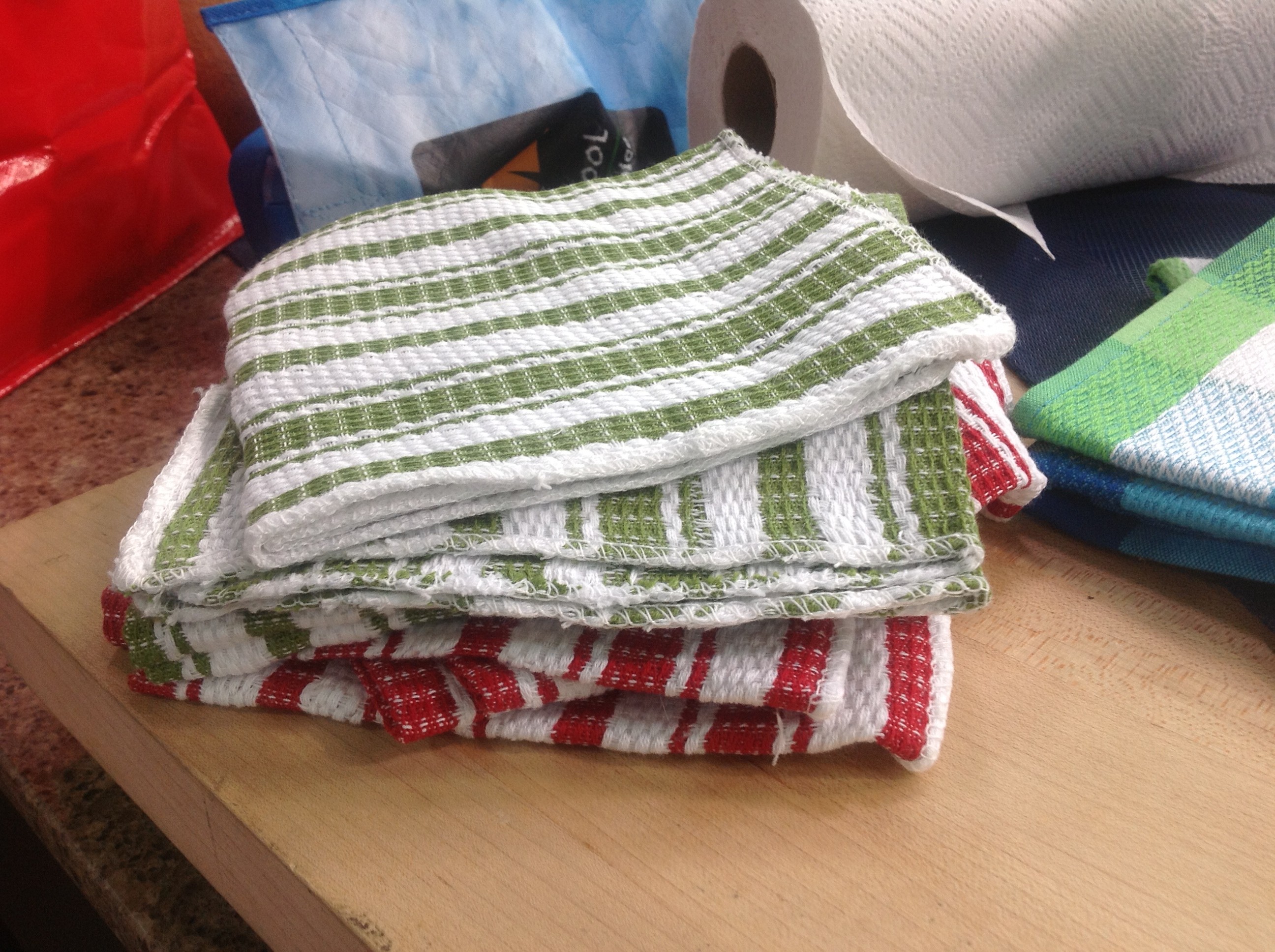
Have many dishcloths
-
To sanitize counters use Health Canada’s recommendation of 5 mL bleach to 750 mL water.
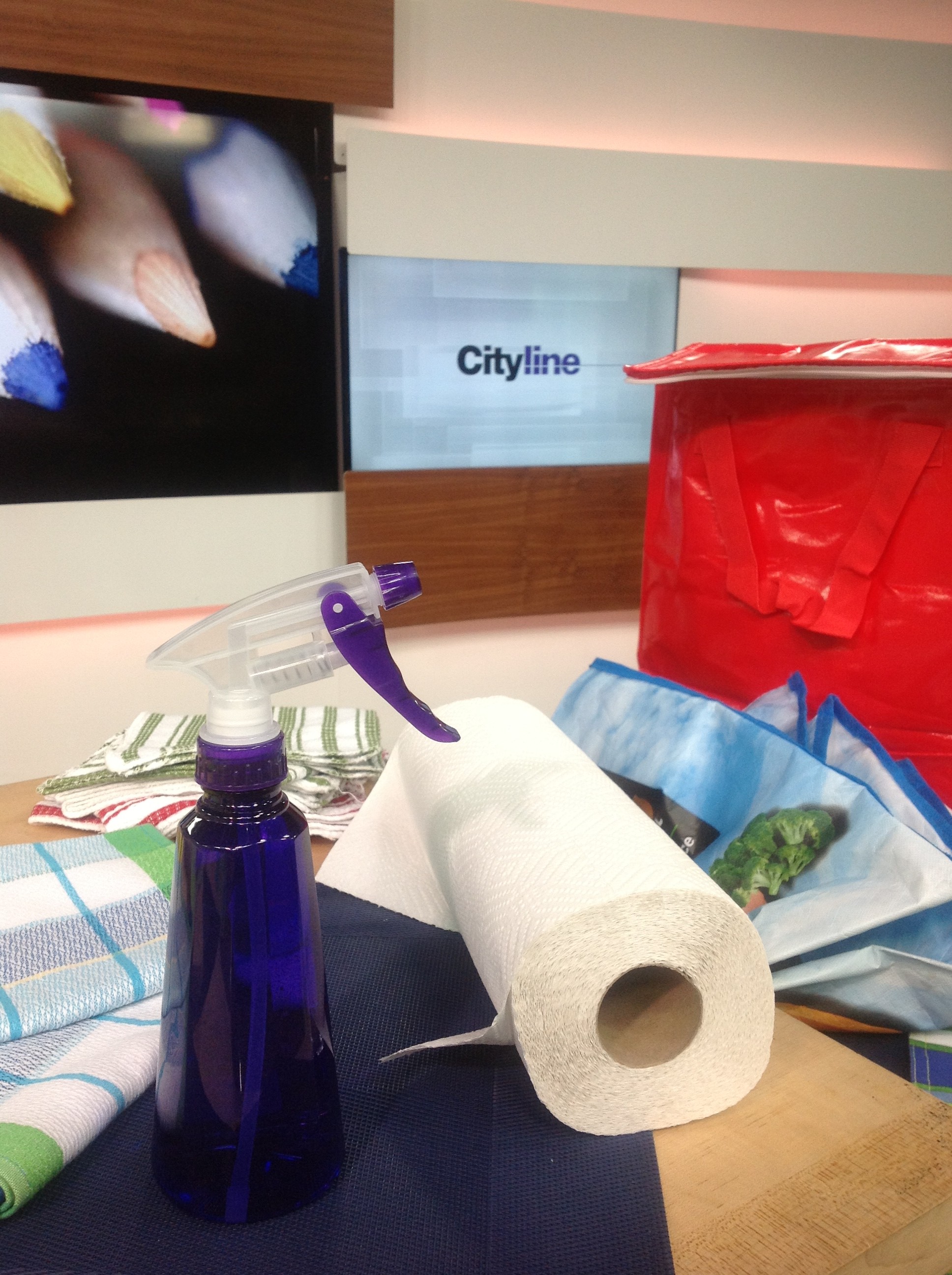
- Wash your reusable grocery bags, often.
- Wash out your cooler bags, often
- Wash out lunch bags every day
- Rinse all produce under cold running water just before use including hard peeled vegetables and fruits i.e. watermelon, squash, muskmelon, etc.
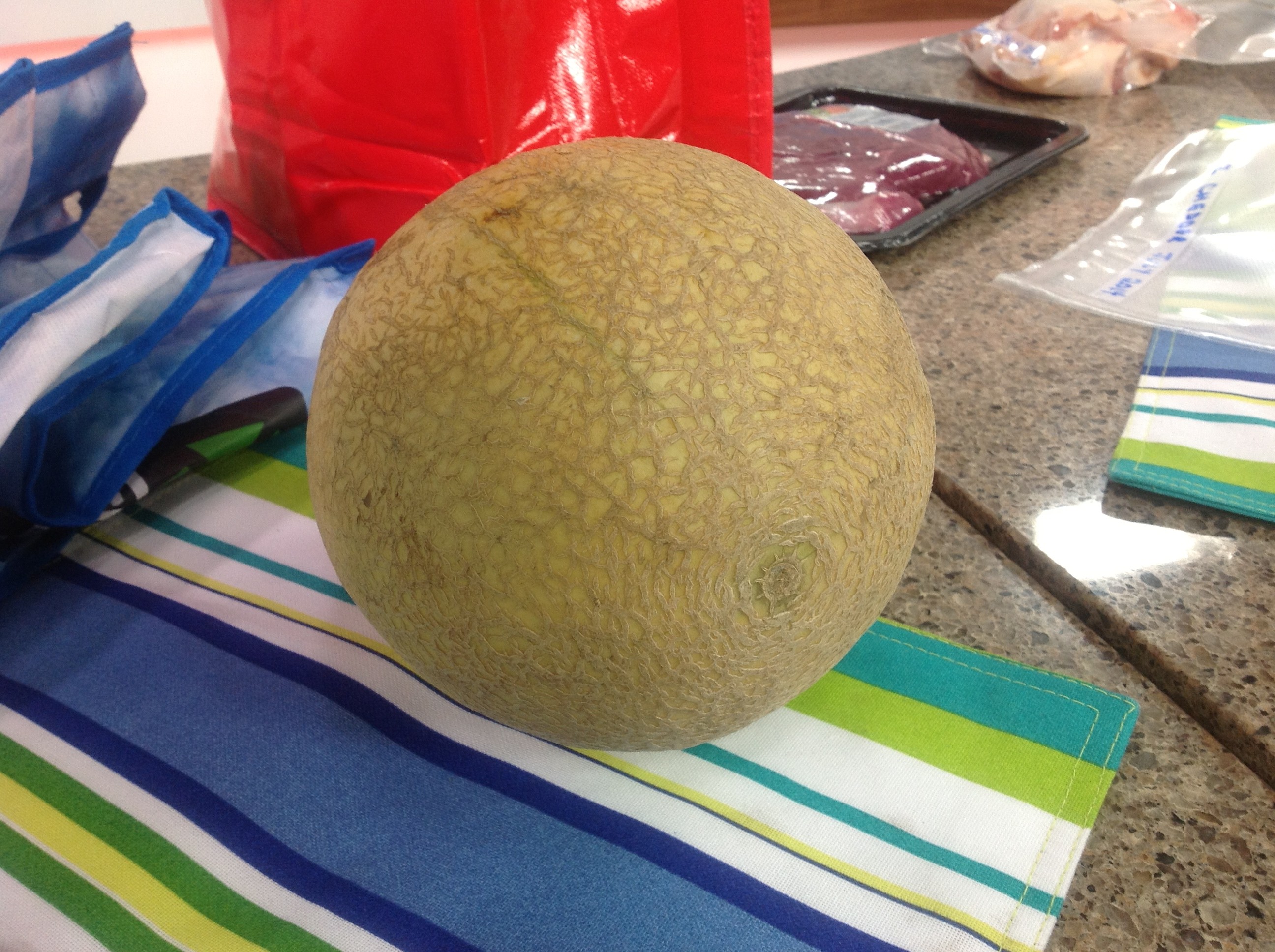
- Use a vegetable brush on skinned produce like potatoes, apples, pears, etc.
Chill
-
- Let the food safety rule: Keep hot foods hot and cold food cold become your food safety mantra. The temperature danger zone for food is between 4 °C (40 °F) to 60 °C (140 °F). Keep foods above or below these temperatures.
- It starts in your refrigerator – keep it at 40°F/4°C or lower and your freezer at -18 °C (0 °F) or lower
- Bring raw meat, fish, or poultry home from the grocery store and refrigerate as soon as possible or within two hours in the cooler months, in the summer, it’s ASAP.
- Store raw meat, fish, and poultry away from other foods in separate containers to prevent any raw juices dripping on other foods. Best place to store them is on the bottom shelf.
- Store raw meat, fish or poultry no longer than two to three days in the refrigerator, any longer than that freeze and thaw as needed.
When freezing foods place in a freezer bag or container to avoid freezer burn and label with the date.
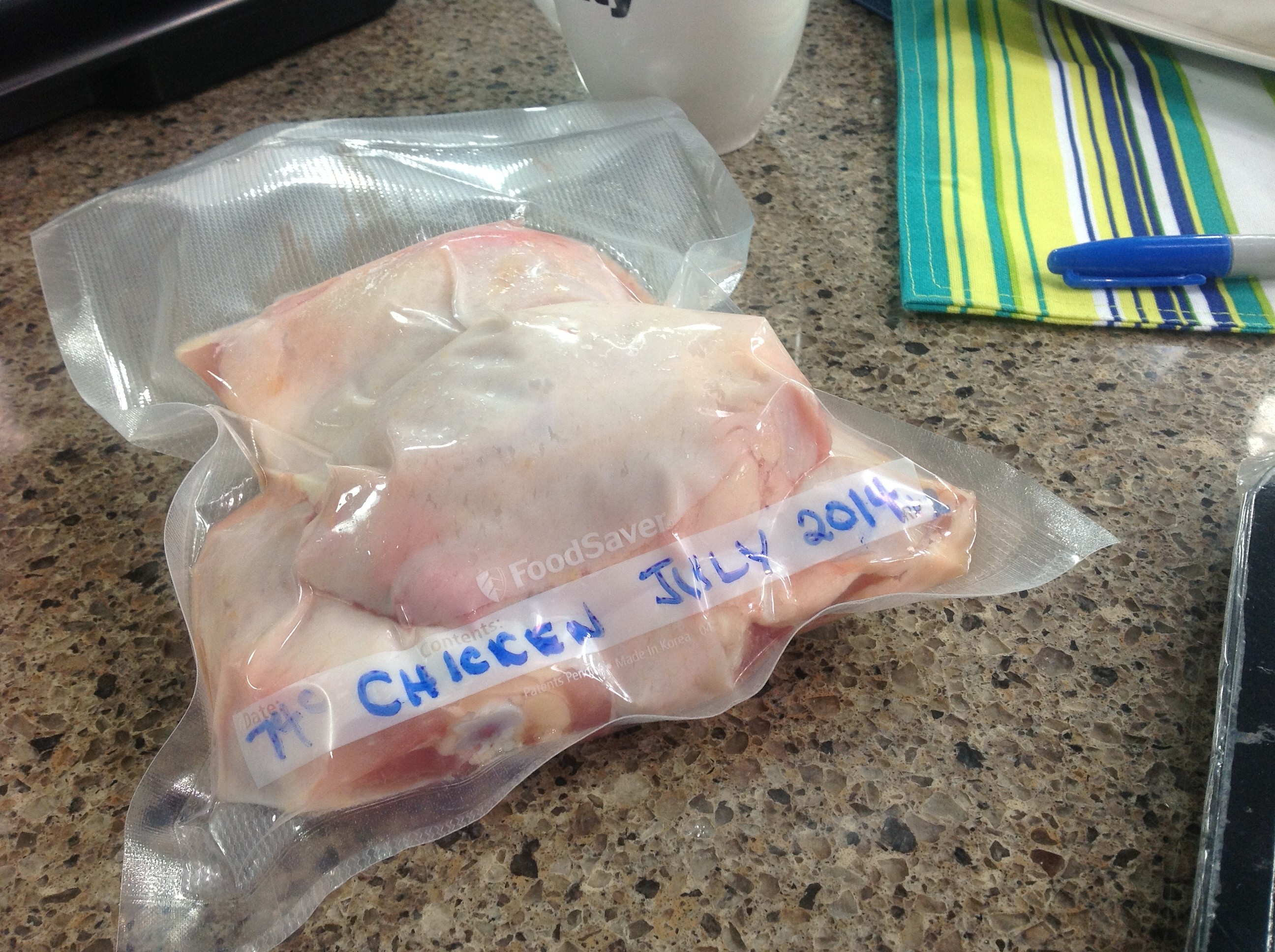
- Don’t overcrowd your fridge, you need proper cold air circulation – if you haven’t seen the back of your fridge since Pierre Trudeau, Justin’s dad, was the Prime Minister the storage times go down.
- Thawing – even though your mom may have thawed frozen meat, fish, and poultry on the kitchen counter, doesn’t mean it gets the green light. NEVER thaw anything on the kitchen counter. Thaw in the fridge, in the microwave, or in a sink full of cold water changing the water every 30 minutes.
Cook
- They only way to tell that meat, fish, and poultry is cooked is with a food thermometer. Investing in one is the most important tool in food safety you will have.
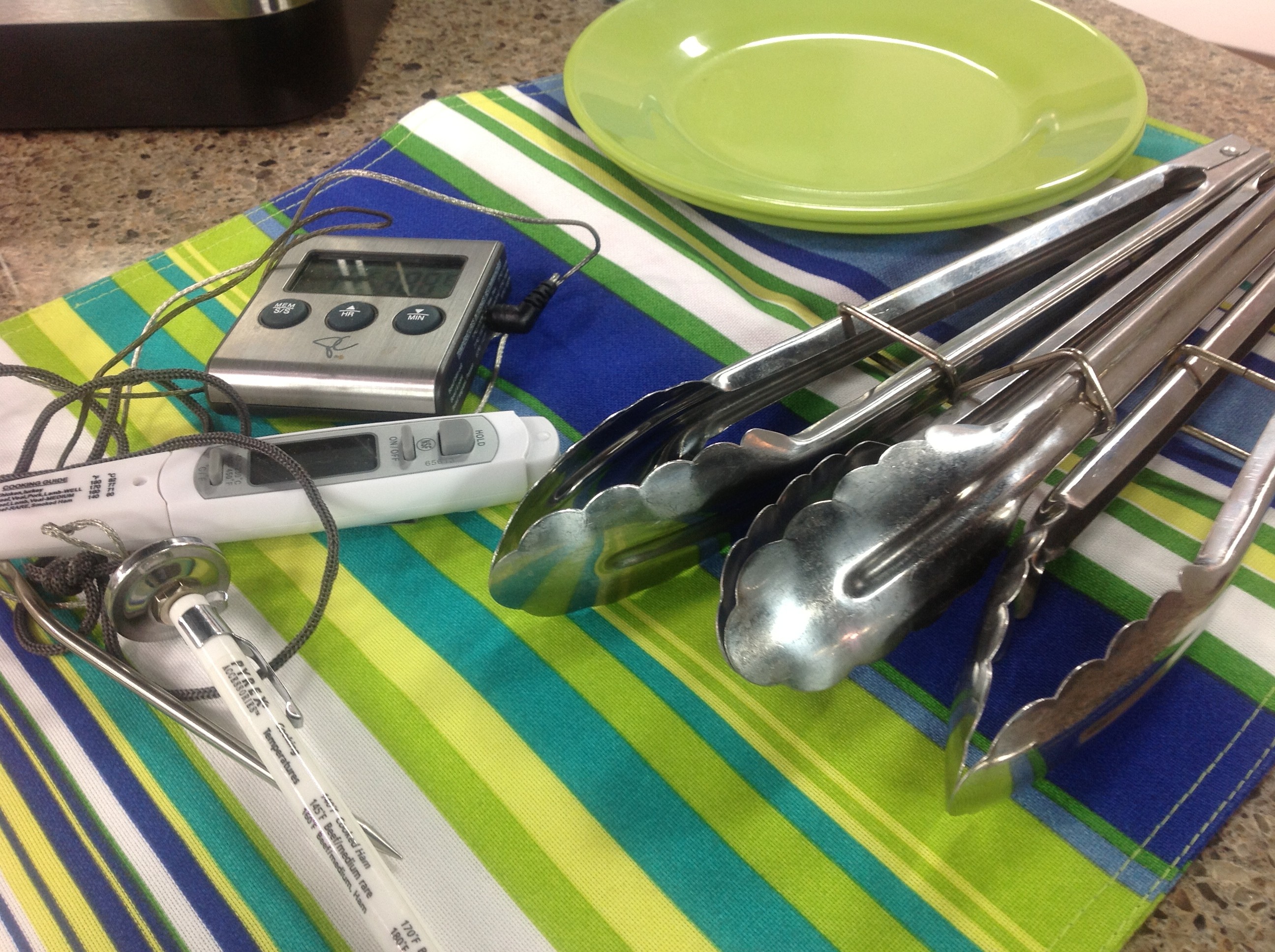
- List of Safe Internal temperatures from Health Canada
- Have a pot of chili on the stove for a crowd? Keep hot foods at or above 60ºC (140°F).
- Cooked meat, fish, and poultry should be stored in separate containers within one – two hours after being cooking and eaten within two to four days. Remember you can’t smell bacteria until it’s so far gone that food poisoning is sure to occur. When in doubt, throw it out.
Transporting a dish to a party? Keep it cold or keep it hot. Use thermal bags. For cold foods: cold air falls, pack the food with freezer packs on top of the food and on the sides. For hot foods: keep the food hot until just before you leave and heat as soon as you arrive and only if the drive was less than 30 minutes. If you are driving from Winnipeg to Brandon, Manitoba, don’t pack hot food at all. Offer to bring something cold.
Great reminders and I love the Manitoba reference!
🙂
M